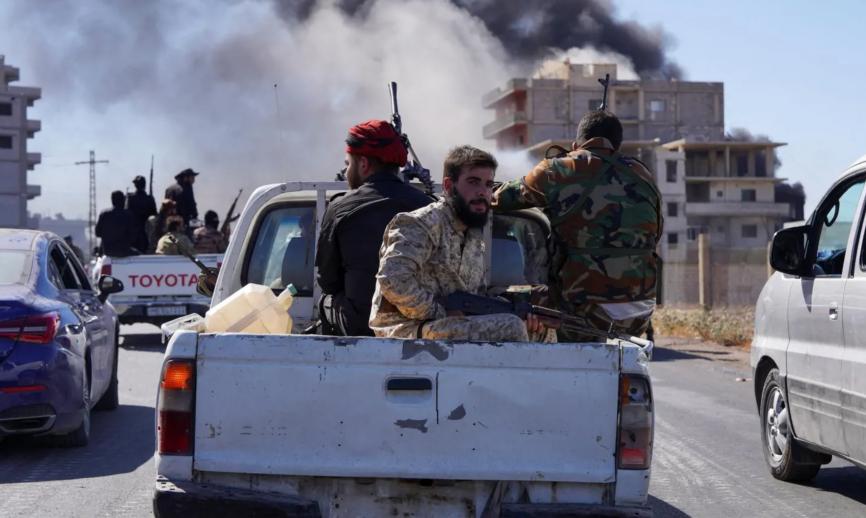Deadly clashes resume in Syria’s Sweida province, threatening fragile ceasefire

According to the UK-based Syrian Observatory for Human Rights, renewed clashes broke out between local Druze factions and government forces near Tal Hadid
Fresh sectarian violence has erupted in southern Syria’s Druze-majority Sweida province, leaving at least four people dead on Sunday, in the most serious breach of a fragile ceasefire agreed last month.
According to the UK-based Syrian Observatory for Human Rights, renewed clashes broke out between local Druze factions and government forces near Tal Hadid in the western countryside.
Three members of the Syrian security forces were reportedly killed, along with one local fighter, in what the monitor described as an escalation at a “strategic control point” due to its elevated position overlooking surrounding areas.
The Sweida region, traditionally quiet during much of Syria’s conflict, witnessed unprecedented bloodshed in July when fierce fighting erupted between Druze militias and Sunni Bedouin tribes.
The violence prompted the intervention of both government troops and allied tribal fighters. The week-long conflict left more than 1,400 people dead, according to the Observatory, before a ceasefire was brokered.
Tensions, however, remained high and flared again on Sunday. Clashes were also reported around the city of Thaala, with explosions and heavy gunfire heard across Sweida. The Observatory accused government forces of shelling the area from nearby positions.
State-run media outlet SANA blamed Druze groups loyal to prominent religious leader Hikmat al-Hijri for violating the ceasefire, claiming they ambushed security forces at Tal Hadid, killing one officer and injuring several others. The military reportedly regained control of the area by Sunday afternoon.
Activists and locals say Damascus has effectively imposed a siege on Sweida in recent weeks, attempting to pressure residents into submission.
The Observatory claimed the Syrian government is using blockades and limited access to essential goods to tighten its grip on the region.
In response, Sweida residents held widespread demonstrations on Friday, demanding the withdrawal of security forces and the opening of a humanitarian corridor to neighboring Jordan.
The main highway connecting Sweida to Damascus has been cut off since July 20, deepening the province’s isolation.
While Damascus blames Druze factions for blocking the route, the Observatory reports that pro-government armed groups have seized control of the area and are restricting movement.
Although the United Nations managed to deliver some aid convoys into Sweida, Syrian state media reported on Sunday that the humanitarian corridor had been temporarily closed “until the area is secured,” citing alleged ceasefire violations by “outlaw groups.”
The violence has reignited fears among Syria’s minority communities, particularly after the fall of former president Bashar al-Assad in December during an Islamist-led offensive. Assad had long positioned himself as a protector of Syria’s religious minorities, including Alawites and Druze.
Despite repeated assurances from the new ruling authorities to safeguard minority rights, recent events including the massacre of over 1,400 Alawites along Syria’s coastline and the deteriorating situation in Sweida have raised doubts over their ability to manage rising sectarian tensions.
The Syrian government has pledged to investigate the July violence in Sweida. A government-formed inquiry committee held its first session on Saturday, but many in the province remain skeptical about its independence and scope.
